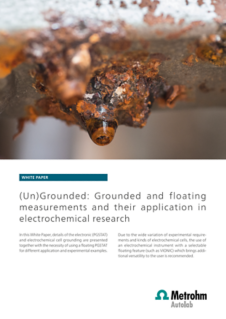A potentiostat is an electrochemical instrument that controls the potential difference (voltage) between the working electrode and the reference electrode while measuring the resulting current flow between the working and counter electrodes. It maintains a constant potential, making it ideal for studying redox reactions, corrosion, and processes where precise potential control is critical.
A galvanostat, on the other hand, controls the cell current rather than the voltage. This makes it suitable for applications where maintaining a constant current is required, such as electrolysis, electrodeposition, or battery charge-discharge testing.
All Metrohm Autolab and Metrohm Dropsens instruments combine both potentiostatic and galvanostatic capabilities in a single device, allowing users to select the most suitable mode based on their experimental needs.
